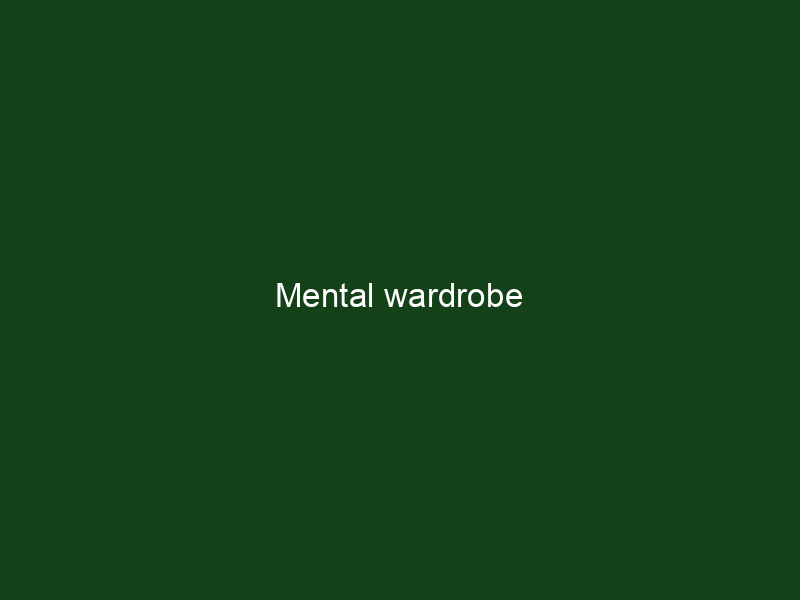This is a short post to offer a very specific solution for mental palaces. here is another explanation of the same subject.
Suppose you have a mental palace, with nice memorable walls and corners. I assume you are already comfortable placing markers along the walls. Maybe small objects, maybe mindmaps and maybe PAO markers. You can place all of them in the mental palace. And now you come up with a long list and you need to add it to the palace. A list does not justify a complex mechanism, but it needs to be something sufficiently neat to store many simple items. A mental wardrobe is just such a container.
You can have mental wardrobes of all sorts and sizes, with multiple levels and shelves and doors, but most of the time it is a simple wooden box in a unique shape that matches the particular visualization and a single hanger with simple shirts. The key here is getting the right shirt. So we add numbers to each shirt, just like we do in a peg system. And we encode the information in the shirt design. A simple T-shirt can have an image on its front and another image on its back, and it can have the basic color and additional ornament color, say for sleeves. These means that a basic T-shirt can hold at least 5 details. And you can also have other types of shirts. For dual coding put the shirt number where she shirt size usually is. It is recommended to use an alphabet-based convention for the shirt numbering, like animals starting with some letter. This is convenient for several reasons. First, you do not want to keep more than 25 items in the wardrobe, since there are better structures for that. Secondly, you do not quite want to mess up with the pegs you may be used for other things. And lastly, it is easy to create proper imagery, so you do not have to use the same mnemonics. For example, you can link the coding of the wardrobe alphabet to the theme of the palace (animals, cities, fruits, etc) and if you take the shirt out, you will know where to return it.
Mental wardrobes are great for lists of tasks, for actually remembering your physical wardrobes and closets, for pro/con tables and so on. The shirts are great items to manipulate with. For example, you can prioritize tasks based on the sort of the shirt you put in. You can use U-neck, V-neck, turtle neck and buttoned shirts for different categories of tasks. Also, on a shirt, you can easily place a small mental map if you need to remember many details for a specific item.
Have fun with your wardrobe. Be playful. You can alter the mechanics and replace shirts by porcelain if you want. Maybe put some sort of optional objects on the bottom of the wardrobe, so you will have fun reviewing it later. If the wardrobes contain information you need to store in your long term memory, you should review them often. In a list of 20 items it is quite easy to lose one.

Get 4 Free Sample Chapters of the Key To Study Book
Get access to advanced training, and a selection of free apps to train your reading speed and visual memory

